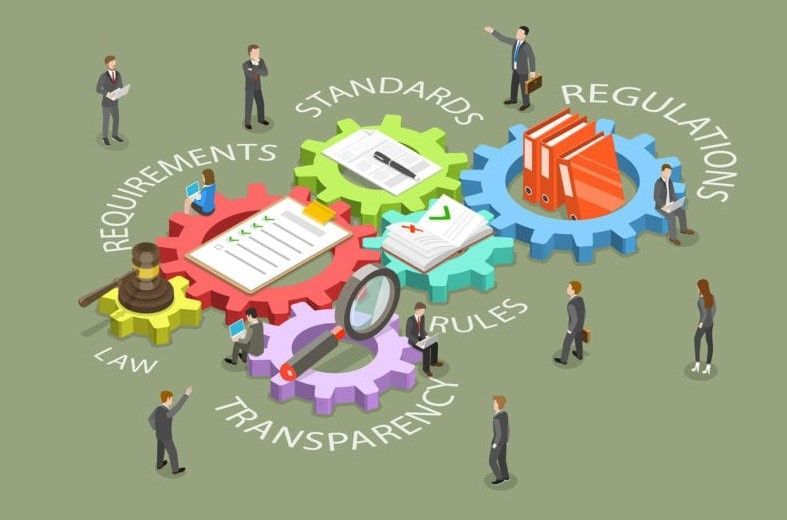Unsticking Strategy
August 14, 2025
“If I had asked people what they wanted, they would have said faster horses.”
–Henry Ford
Some strategic issues stick around too long . Here’s how to make them useful or cut them loose.
By mass-producing cars instead of strength-training horses, Henry Ford made a strategic, world-changing decision. How did he do it? What proven process did he use? Clearly, he didn’t ask potential purchasers. No, Ford was a visionary who “knew” that taking this specific risk, though challenging, would likely pay off.
Unfortunately, true visionaries are rare. How should managers and executives approach making strategic decisions?
That’s a question we are getting more and more from our clients and even prospects. It’s not that they want “strategic plans” as such. They don’t want to change the direction of the ship, just make the ship faster or, at least, more efficient. They are looking for practical help in making important decisions about business issues that are strategic in nature, some of which have been nagging them for some time.
A law firm recently asked us to facilitate a discussion of partners around the questions of both geographic expansion and practice area extension. The topics had been on the table for several years, but no decisions had been made. By bringing some structure to the decision-making process we were able to facilitate a discussion that led the partners to making specific decisions with consensus. They are now implementing those decisions.
Key Point #1: Our role was not to provide analysis, technical expertise, due diligence, or to make a recommendation. Our role was to facilitate the decision-making process.
Key Point #2: Outside facilitation gives top management the opportunity to participate fully in the discussions and allows senior executives to focus exclusively on the matters at hand. Such meetings are too often facilitated by the CEO or other top manager. That’s not nearly so effective because both running the meeting and participating in a meaningful way are nearly impossible.
In fact, strategic issues can hang around for a long time, diverting focus and draining energy behind the scenes. Maybe a company doesn’t recognize them or doesn’t think they impact the business significantly. Perhaps management does recognize them but day-to-day operations or pursuing new business delays decisions until a crisis erupts. Maybe management has already invested time and money in strategic planning, and it’s not time to engage in a full-blown reassessment.
What to do? More and more we are seeing our clients call for a “strategy issues” meeting or retreat where they isolate themselves to address a few, selected issues. One of our clients does it quarterly, another annually. Some do it only as needed.
Each of these sessions is different because the issues, industries, and businesses are different. Each employs a customized plan based on conversations with a company or a firm’s leadership. But, in general, some concepts can help other companies facing similar challenges.
First, unless the session is designed to target a specific issue, it’s critical to gather all of the water-cooler issues floating around the office. One reason companies have a surprising number of unresolved issues is that nobody knows where to start, which ones to prioritize and apply resources to. A good discovery meeting with management and a questionnaire to the appropriate employees shakes out open issues and can even sort out priorities. By enabling people to write in any issue you quickly get a sense of what is important to a few people and common to all.
Second comes a facilitation plan for the session. Sometimes, despite such planning, operational issues raise their hands during strategic discussions. There are two ways of addressing operational issues in a strategic context: Decide that no strategic issues will be settled until the operational issues get cleaned up or decide to take up operations problems at a different meeting and return to solving strategic problems.
Finally, it’s critical to assign responsibility during the meeting for implementing the decisions and making them work. Follow-up milestones support accountability and are also critical.
Key Point: Poor or no follow-up in nearly any business endeavor dooms many a solid idea or activity. We recommend developing a follow-up process as part of the planning for whatever event or program is in play.
How do you know if an issue is strategic or operational?
Strategic decisions have to do with what the business is and in which direction it should go. Operations issues are the day-to-day challenges or, if one exists, executing the strategic plan. Here are examples of strategic questions and operational necessities.
Strategic: Open an office in Cleveland?
Operational: Fix inefficient work flow in the Cleveland office.
Strategic: Offer a new product or service?
Operational: Train our business developers to sell current products more efficiently.
Strategic: Develop a new channel of distribution?
Operational: Reduce excessive shipping errors.
We’ve facilitated strategic discussions about a number of issues:
Executive Team Communication: Competent, well-intentioned managers couldn’t grow the company at the rate the founder had targeted. A book, The Five Dysfunctions of a Team (Patrick Lencioni), provided a model–and a mirror–of how high-level teams both fail and succeed.
The key was ferreting out issues, facilitating group self-evaluation, and raising the bar for the future. We were gratified when the founder wrote us: “Thanks to your leadership we had the best and most robust discussion that I have ever seen by this group . . . [and] we accomplished a lot, surpassing my expectations.”
Assessing and Prioritizing “Good” Ideas: A company’s 12 senior managers worked effectively together and spent time talking about many good ideas for improving the company. But talk was all they did with these ideas. We were called in to help assess and prioritize the ideas in a two-day strategy session.
Our pre-meeting interviews and surveys revealed some 200 ideas–nearly all worth considering. Which were worth pursuing at that time? The session laid a solid foundation the team used afterward to tackle just three major ideas. The time and energy they used to spend talking now went into doing.
Here are some other strategic issues we’ve facilitated:
- Brainstorming a New Product Line
- Expanding Professional Practice Areas
- Evaluating Domestic vs. Offshore Opportunities
- Developing a Sustainable Competitive Advantage
- Climbing the Ladder in an Existing Vertical Market
- Creating a Process to Sell a Company.
Do you have an unresolved strategic issue that has been kicked around for a while or a new one you want to build out? Call us at 847-446-0008. We would love to talk with you, regardless of whether you use us to facilitate the process.
Phil Krone is president of Productive Strategies, Inc., a marketing and management consulting firm specializing in consultative sales training, lead generation and appointment setting, and marketing and marketing communications. Phil can be reached at 847-446-0008 and pkrone@productivestrategies.com.
The post Unsticking Strategy appeared first on Productive Strategies, Inc..











